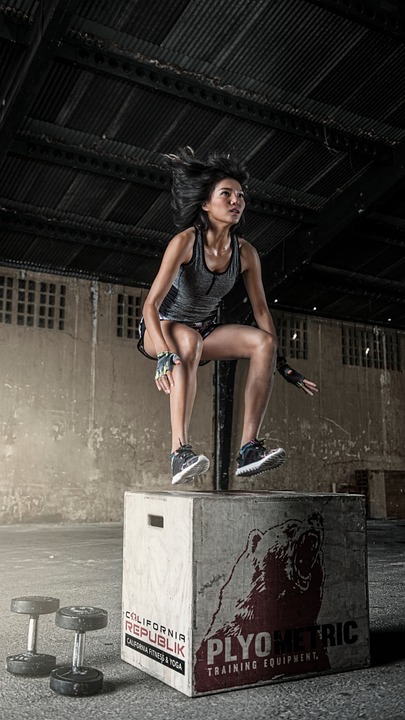Sports
Understanding Plyometric Training: A Complete Guide

Hey there! So, you’ve probably heard of plyometric training, right? It’s that energetic workout style where athletes seem to defy gravity with all those crazy jumps and explosive movements. But what exactly is it? Well, get ready to dive into this complete guide to plyometrics, packed with everything you need to know!
What is Plyometric Training?
Alright, let’s start at the beginning. Plyometric training is all about explosive movements that really get your heart pumping and muscles working. Think of it as a blend of strength training and cardiovascular workouts. The core idea is to use your muscles’ natural elasticity for rapid and powerful movements, making it super effective for building strength and speed.
This kind of training is commonly used by athletes looking to enhance performance in sports that require quick bursts of energy, like basketball, football, or track and field. But guess what? You don’t need to be a pro athlete to enjoy the perks of plyometrics!
The Science Behind Plyometrics
Before jumping into the exercises, let’s get a little nerdy and talk about the science. Plyometrics focus on the stretch-shortening cycle. Here’s how it works:
- Stretch Phase: When you lengthen a muscle quickly, like when you squat down before a jump, your muscle stores elastic energy.
- Shortening Phase: Then, you quickly contract the muscle to unleash that stored energy for a powerful jump.
Pretty cool, right? This entire process not only makes you jump higher and run faster but also improves your overall athletic performance. You can read more about the biomechanics behind plyometrics at Exercise.com.
Benefits of Plyometric Training
You may be wondering, “What’s in it for me?” Well, let’s break down the amazing benefits:
1. Improved Power and Speed
Plyometrics help develop fast-twitch muscle fibers, which are crucial for explosive movements. This can translate to better performance in your chosen sport or even day-to-day activities.
2. Enhanced Coordination
These workouts require a lot of timing and coordination, which means you’ll not only be building muscle but also sharpening your reflexes.
3. Increased Strength
While they might seem like cardio, many plyometric exercises also help build strength. They activate multiple muscle groups at once, leading to overall muscle development.
4. Burn More Calories
Because of their intensity, plyometric workouts can torch calories in less time compared to traditional strength training or running. Who doesn’t love a quick workout that packs a punch?
5. Versatility
Plyometrics can be done anywhere—at home, in a gym, or outdoors. You don’t need fancy equipment, just your body weight.
Getting Started with Plyometric Training
Now that you’re pumped about the perks, let’s talk about how to get started. If you’re new, it’s best to ease into it to prevent injuries.
Warm-Up
Always start with a proper warm-up to get your blood flowing! Try this simple routine:
- Jog in place for 5 minutes
- Dynamic stretches like arm circles and leg swings
- Bodyweight squats to engage those muscles
Basic Plyometric Exercises
Here are a few beginner-friendly exercises to incorporate into your routine:
1. Jump Squats
- Stand with feet shoulder-width apart.
- Lower into a squat, then explode upward, landing softly back into the squat position.
2. Box Jumps
- Find a sturdy box or platform.
- Stand in front, squat down, and jump onto the box, landing softly.
3. Burpees
- Start in a standing position.
- Drop into a squat, kick your feet back into a plank, do a push-up, and then jump back to standing and leap into the air.
4. Lateral Bounds
- Stand on one leg and jump sideways to land on the opposite leg, then jump back.
Progression
As you get stronger, you can increase the intensity. Try adding more reps or height for jumps. Also, consider incorporating agility drills, such as cone drills, to mix it up!
Safety Tips
Plyometric training is fantastic, but it’s essential to keep safety in mind to avoid injuries:
- Focus on Form: Proper technique is key. If you feel off-balance or strained, it’s better to tone it down.
- Listen to Your Body: If something doesn’t feel right, don’t push through the pain. Rest and recover!
- Cross-Train: Mix in other workout styles like strength training and flexibility exercises to keep your body balanced.
Plyometrics and Recovery
Okay, now that we’re all excited to jump and bound, let’s talk about recovery. Just like any other workout, your body needs time to recuperate after plyometric training. Here are a few quick tips:
- Hydration: Keep sipping that water! Staying hydrated helps prevent cramps.
- Nutrition: Fuel your body with protein and healthy carbs to aid muscle recovery.
- Stretching: Post-workout stretches can help reduce soreness and improve flexibility.
Final Thoughts
Whether you’re a seasoned athlete or a fitness newbie, plyometric training can add a fresh twist to your workout routine. It’s not just about looking good; it’s about functional strength, power, and agility in everything you do.
So, are you ready to leap into action? Give plyometrics a go, and you might just surprise yourself with how strong and agile you can become! If you want to explore more about fitness and agility, consider checking out ACE Fitness for great resources and programs tailored to your journey. Happy jumping!
